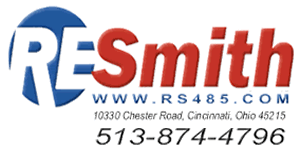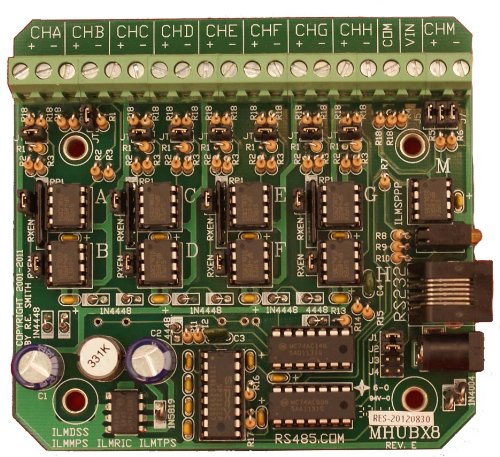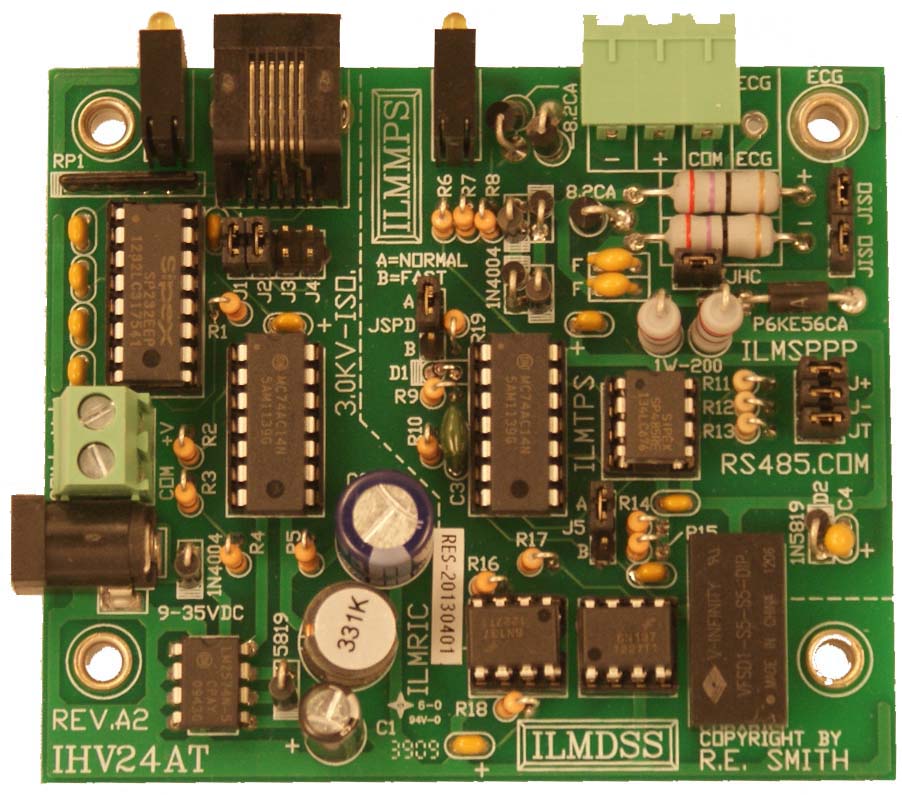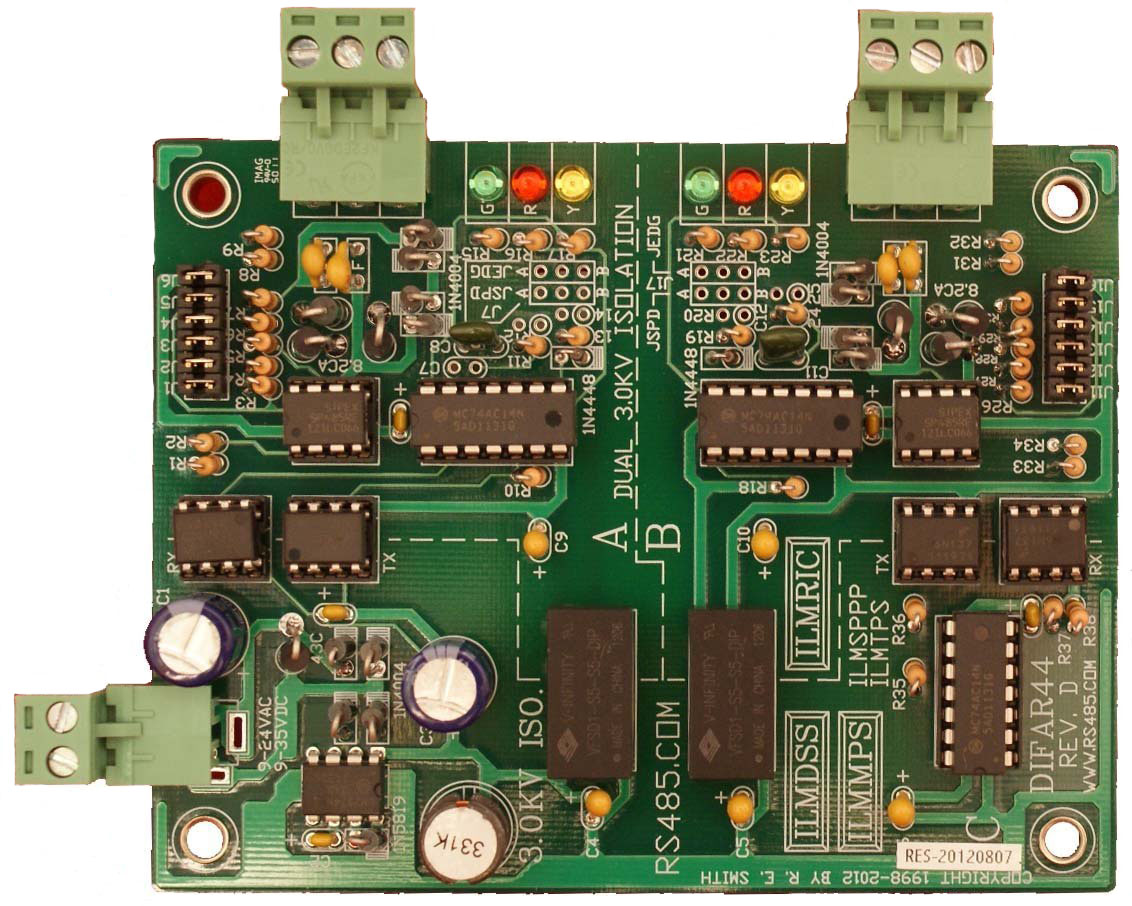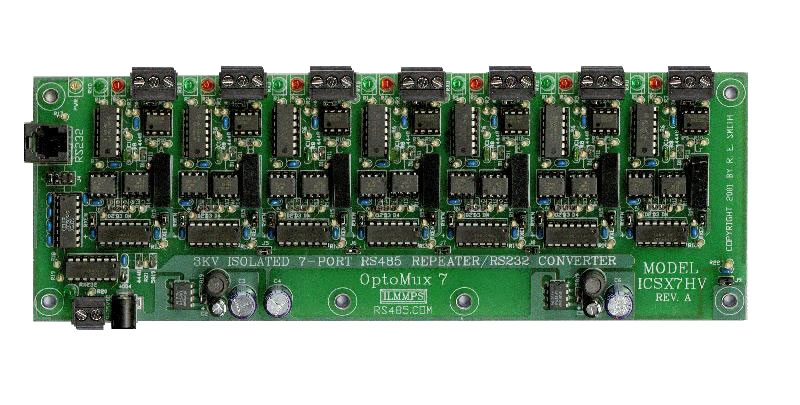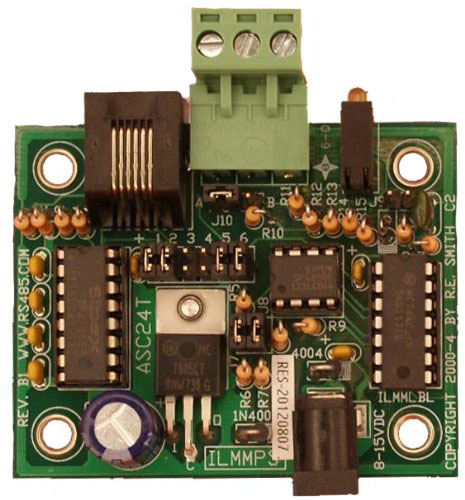QUICK REFERENCE
FOR RS485, RS422, RS232 AND RS423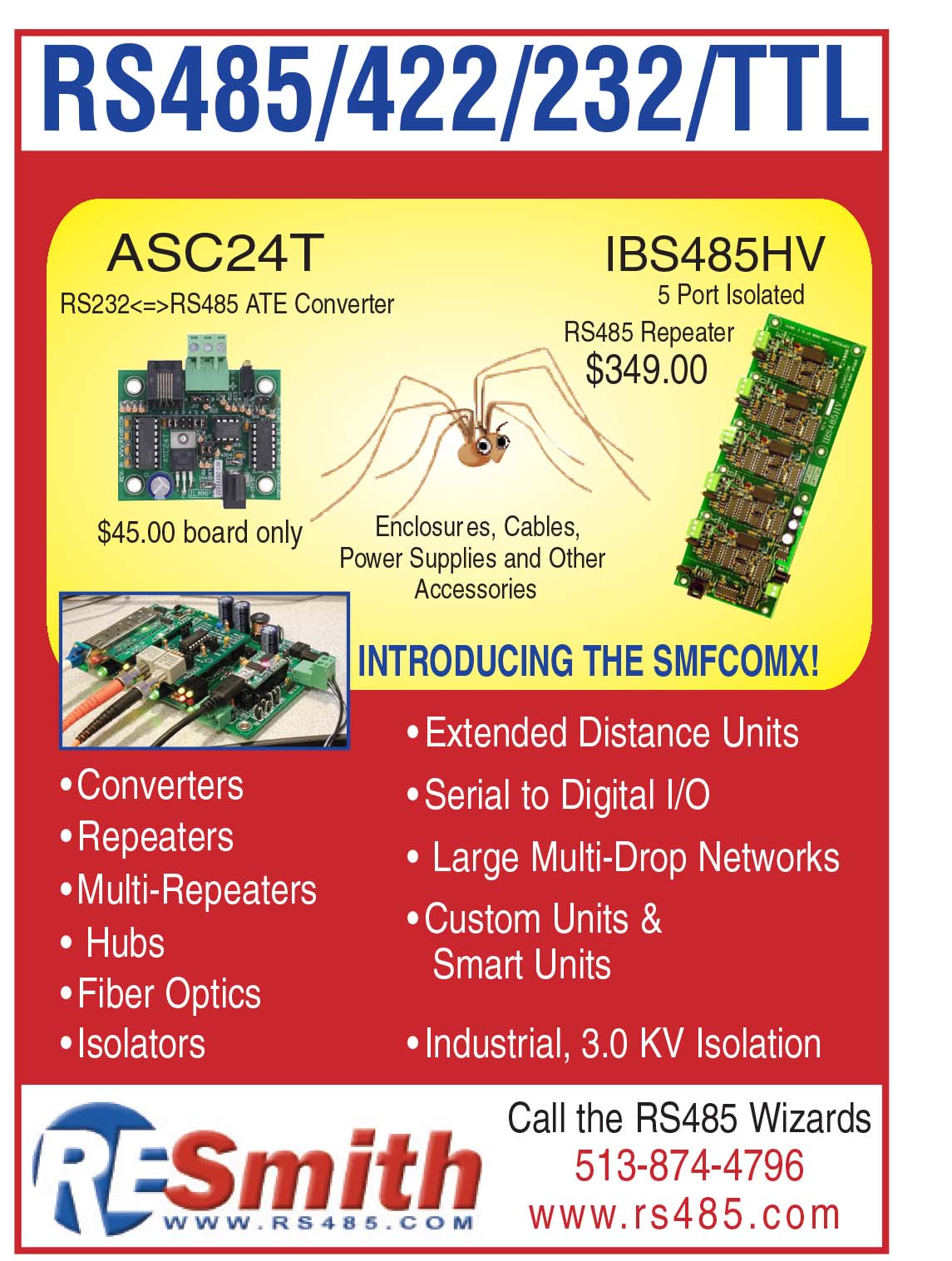
Introduction
Line drivers and receivers are commonly used to exchange data between two or more points (nodes) on a network. Reliable data communications can be difficult in the presence of induced noise, ground level differences, impedance mismatches, failure to effectively bias for idle line conditions, and other hazards associated with installation of a network.
The connection between two or more elements (drivers and receivers) should
be considered a transmission line if the rise and/or fall time is less than
half the time for the signal to travel from the transmitter to the receiver.
Standards have been developed to insure compatibility between units provided
by different manufacturers, and to allow for reasonable success in transferring
data over specified distances and/or data rates. The Electronics Industry
Association (EIA) has produced standards for RS485, RS422, RS232, and RS423
that deal with data communications. Suggestions are often made to deal with
practical problems that might be encountered in a typical network. EIA standards
where previously marked with the prefix "RS" to indicate recommended standard;
however, the standards are now generally indicated as "EIA" standards to
identify the standards organization. While the standards bring uniformity
to data communications, many areas are not specifically covered and remain
as "gray areas" for the user to discover (usually during installation) on
his own.
Single-ended Data Transmission
Electronic data communications between elements will generally fall into two broad categories: single-ended and differential. RS232 (single-ended) was introduced in 1962, and despite rumors for its early demise, has remained widely used through the industry. The specification allows for data transmission from one transmitter to one receiver at relatively slow data rates (up to 20K bits/second) and short distances (up to 50Ft. @ the maximum data rate).
Independent channels are established for two-way (full-duplex) communications. The RS232 signals are represented by voltage levels with respect to a system common (power / logic ground). The "idle" state (MARK) has the signal level negative with respect to common, and the "active" state (SPACE) has the signal level positive with respect to common.
RS232 has numerous handshaking lines (primarily used with modems), and also specifies a communications protocol. In general if you are not connected to a modem the handshaking lines can present a lot of problems if not disabled in software or accounted for in the hardware (loop-back or pulled-up). RTS (Request to send) does have some utility in certain applications.
RS423 is another single ended specification with enhanced operation over RS232; however, it has not been widely used in the industry.
Differential Data Transmission
When communicating at high data rates, or over long distances in real world environments, single-ended methods are often inadequate. Differential data transmission (balanced differential signal) offers superior performance in most applications. Differential signals can help nullify the effects of ground shifts and induced noise signals that can appear as common mode voltages on a network.
RS422 (differential) was designed for greater distances and higher Baud rates than RS232. In its simplest form, a pair of converters from RS232 to RS422 (and back again) can be used to form an "RS232 extension cord." Data rates of up to 100K bits / second and distances up to 4000 Ft. can be accommodated with RS422. RS422 is also specified for multi-drop (party-line) applications where only one driver is connected to, and transmits on, a "bus" of up to 10 receivers.
While a multi-drop "type" application has many desirable advantages, RS422 devices cannot be used to construct a truly multi-point network. A true multi-point network consists of multiple drivers and receivers connected on a single bus, where any node can transmit or receive data.
"Quasi" multi-drop networks (4-wire) are often constructed using RS422 devices. These networks are often used in a half-duplex mode, where a single master in a system sends a command to one of several "slave" devices on a network. Typically one device (node) is addressed by the host computer and a response is received from that device. Systems of this type (4-wire, half-duplex) are often constructed to avoid "data collision" (bus contention) problems on a multi-drop network (more about solving this problem on a two-wire network in a moment).
RS485 meets the requirements for a truly multi-point communications network, and the standard specifies up to 32 drivers and 32 receivers on a single (2-wire) bus. With the introduction of "automatic" repeaters and high-impedance drivers / receivers this "limitation" can be extended to hundreds (or even thousands) of nodes on a network. RS485 extends the common mode range for both drivers and receivers in the "tri-state" mode and with power off. Also, RS485 drivers are able to withstand "data collisions" (bus contention) problems and bus fault conditions.
To solve the "data collision" problem often present in multi-drop networks hardware units (converters, repeaters, micro-processor controls) can be constructed to remain in a receive mode until they are ready to transmit data. Single master systems (many other communications schemes are available) offer a straight forward and simple means of avoiding "data collisions" in a typical 2-wire, half-duplex, multi-drop system. The master initiates a communications request to a "slave node" by addressing that unit. The hardware detects the start-bit of the transmission and automatically enables (on the fly) the RS485 transmitter. Once a character is sent the hardware reverts back into a receive mode in about 1-2 microseconds (at least with R.E. Smith converters, repeaters, and remote I/O boards).
Any number of characters can be sent, and the transmitter will automatically re-trigger with each new character (or in many cases a "bit-oriented" timing scheme is used in conjunction with network biasing for fully automatic operation, including any Baud rate and/or any communications specification, eg. 9600,N,8,1). Once a "slave" unit is addressed it is able to respond immediately because of the fast transmitter turn-off time of the automatic device. It is NOT necessary to introduce long delays in a network to avoid "data collisions." Because delays are NOT required, networks can be constructed, that will utilize the data communications bandwidth with up to 100% through put.
Below are the specifications for RS232, RS423, RS422, and RS485. Please
give us a call at 513-874-4796 if further information
is required. We have solutions to most problems that are encountered in
this area. Any comments and/or corrections would be appreciated.
Thanks, Ron Smith
| SPECIFICATIONS |
RS232 |
RS423 |
RS422 |
RS485 |
| Mode of Operation |
SINGLE
-ENDED |
SINGLE
-ENDED |
DIFFERENTIAL |
DIFFERENTIAL |
| Total Number of Drivers and Receivers on One Line (One driver
active at a time for RS485 networks) |
1 DRIVER
1 RECVR |
1 DRIVER
10 RECVR |
1 DRIVER
10 RECVR |
32 DRIVER
32 RECVR |
| Maximum Cable Length |
50 FT. |
4000 FT. |
4000 FT. |
4000 FT. |
| Maximum Data Rate (40ft. - 4000ft. for RS422/RS485) |
20kb/s |
100kb/s |
10Mb/s-100Kb/s |
10Mb/s-100Kb/s |
| Maximum Driver Output Voltage |
+/-25V |
+/-6V |
-0.25V to +6V |
-7V to +12V |
| Driver Output Signal Level (Loaded Min.) |
Loaded |
+/-5V to
+/-15V |
+/-3.6V |
+/-2.0V |
+/-1.5V |
| Driver Output Signal Level (Unloaded Max) |
Unloaded |
+/-25V |
+/-6V |
+/-6V |
+/-6V |
| Driver Load Impedance (Ohms) |
3k to 7k |
>=450 |
100 |
54 |
| Max. Driver Current in High Z State |
Power On |
N/A |
N/A |
N/A |
+/-100uA |
| Max. Driver Current in High Z State |
Power Off |
+/-6mA @ +/-2v |
+/-100uA |
+/-100uA |
+/-100uA |
| Slew Rate (Max.) |
30V/uS |
Adjustable |
N/A |
N/A |
| Receiver Input Voltage Range |
+/-15V |
+/-12V |
-10V to +10V |
-7V to +12V |
| Receiver Input Sensitivity |
+/-3V |
+/-200mV |
+/-200mV |
+/-200mV |
| Receiver Input Resistance (Ohms), (1 Standard
Load for RS485) |
3k to 7k |
4k min. |
4k min. |
>=12k |
Popular Products:
"Let me spin a very large
RS485 network for you!"
 |

